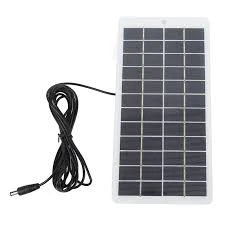solar panel investigatory project
Investigatory Project on Solar Panels Harnessing the Power of the Sun
In a world increasingly aware of the environmental impacts of fossil fuels, solar energy has emerged as a viable and sustainable alternative. This investigatory project focuses on solar panels—devices that convert sunlight into electricity—and aims to explore their efficiency, advantages, and potential improvements in the renewable energy sector.
Introduction to Solar Panels
Solar panels, also known as photovoltaic (PV) panels, convert light energy from the sun into electrical energy. The basic principle behind their function is the photovoltaic effect, which occurs when sunlight strikes the surface of the solar cells, typically made of silicon. This interaction excites electrons, creating an electric current that can be harnessed for various applications, from powering homes to fueling electric vehicles.
Objectives of the Project
The primary goals of this investigatory project are to
1. Investigate the efficiency of different types of solar panels. 2. Analyze the factors that affect their performance. 3. Explore feasible improvements to enhance their energy conversion rates.
Through this research, we aim to understand the current limitations of solar technology and the potential for future advancements.
Types of Solar Panels
Solar panels can generally be categorized into three types monocrystalline, polycrystalline, and thin-film
.1. Monocrystalline Panels Made from a single crystal structure, these panels offer high efficiency (15-22%) and are space-efficient. However, they are generally more expensive to produce.
solar panel investigatory project

2. Polycrystalline Panels Composed of multiple silicon crystals, these panels are less expensive but tend to have lower efficiency (13-16%). They are ideal for larger installations where space is not a constraint.
3. Thin-Film Panels Made from layers of photovoltaic material, these panels are lightweight and flexible, allowing for diverse applications. While their efficiency (10-12%) is lower, they perform better in low-light conditions.
Factors Affecting Solar Panel Efficiency
Several factors influence the performance of solar panels
1. Temperature Higher temperatures can decrease the efficiency of PV cells. Monitoring and mitigating temperature effects can enhance performance.
2. Angle and Orientation The angle at which panels are installed affects their ability to capture sunlight. Optimal angles vary by geographic location.
3. Shading Even partial shading can significantly reduce a panel’s output. Researching potential solutions like micro-inverters or power optimizers can help mitigate this issue.
4. Quality of Materials Higher quality materials generally lead to improved efficiencies and longer lifespans for solar panels.
Conclusion
The investigation into solar panels reveals their significant role in combating climate change and promoting sustainable energy sources. By examining different types of panels and the factors influencing their performance, we can identify practical steps for enhancing their efficiency. The development of advanced materials, better manufacturing techniques, and improved installation strategies holds promise for the future of solar technology.
As global demand for energy continues to rise and concerns about environmental degradation intensify, solar panels stand out as a beacon of hope. Continued research and innovation in the field are essential for maximizing their potential, paving the way for a cleaner and more sustainable energy future. This investigatory project serves as a stepping stone for further exploration into the incredible world of solar energy, urging us to embrace the sunlight and harness its power for generations to come.
-
String Solar Inverter: The High-Efficiency Solution for Smart Solar EnergyNewsJul.14,2025
-
Revolutionizing Rooftop Energy with the Power of the Micro Solar InverterNewsJul.14,2025
-
Power Independence with Smart Off Grid Solar Inverter SolutionsNewsJul.14,2025
-
On Grid Solar Inverter: Powering the Future with Smart Grid IntegrationNewsJul.14,2025
-
Monocrystalline Solar Panels: High-Efficiency Power for the Future of Clean EnergyNewsJul.14,2025
-
Bifacial Solar Panel: A Smarter Investment for Next-Generation Energy SystemsNewsJul.14,2025







